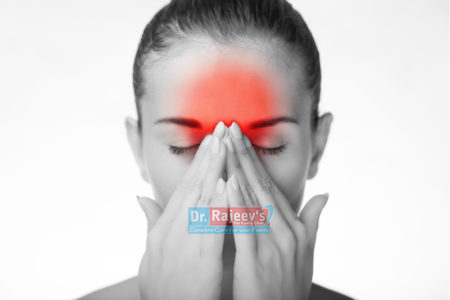


A retinal migraine, or ocular migraine, is a rare form of migraine. This type of migraine includes repeated bouts of short–lasting, diminished vision or blindness in one eye. These bouts of diminished vision or blindness may precede or accompany a headache and nausea.
The symptoms of a retinal migraine are the same as a regular migraine, but they include a temporary change in vision of one eye.
Vision Loss : People experiencing retinal migraines will often lose vision in one eye only. This is usually brief, lasting about 10 to 20 minutes. In some cases, this can last up to an hour. Some people will also see a pattern of black spots called “scotomas.” These black spots gradually get bigger and cause complete loss of vision.
Partial Vision Loss : Other people will partially lose vision in one eye. This is usually characterized by blurry, dim vision or twinkling lights called “scintillations.” This can last up to 60 minutes.
Headaches : Sometimes, people who experience retinal migraines will experience a headache after or during the attack on their vision. These headaches can last for a few hours to a few days. Physical sickness, nausea, and painful throbbing of the head often accompany the headaches. These typically affect one side of the head. This pain may feel worse when one is physically active.
Retinal migraines occur when the blood vessels to the eyes start to constrict, or narrow. This reduces the blood flow to one of our eyes. After the migraine is over, the blood vessels relax and open up. This allows blood flow to resume, and vision is then restored.
Some eye experts believe that retinal migraines result from changes in nerve cells spreading across the retina. Typically, long-term damage to the eye is rare. Retinal migraines usually aren’t a sign of serious problems within the eye. There’s a small chance that the reduced blood flow can damage the retina. If this happens, it can lead to long-term vision impairment.
The following activities and conditions can trigger retinal migraines:
Additionally, certain foods and liquids can trigger retinal migraines, including:
1. NATRUM MUR : Very useful medicine for treating retinal migraine when person suffer from episodes of blindness followed by headache. There may be experience of zig-zag dazzling, like lightning in eyes before the headache. There is throbbing or hammering type of headace which is more marked in the forehead and top of the head. There is burning sensation on the top of the head with nausea and vomiting.
2. GELSEMIUM : Very useful medicine for retinal migraine when episodes of blindness precede the headache.Useful when pain is most felt in the forehead and temples.There is fullness n heaviss in head appears and head feels as if enlarged in size.There is slight nausea, giddiness, and drowsiness appear with the headache. The pain tends to get better by shaking the head. Very useful when headache is Worsening from tobacco smoking
3. IRIS VERSICOLORIS : Very ueful for retinal migraine when there is blurring of vision prior to headache. TThere is throbbing or shooting headache mostly on the right side.There is intense and constant nausea with headache.There is sleeplessness from headache and exertion tends to aggravate the headache.
4. KALI BICHROME : Useful for retinal migraine when blurred vision or blindness appears before a headache. As the headache intensifies the vision becomes normal. During the headache, there is an aversion to light and noise along with a desire to lie down.
5. BELLADONA : Useful for retinal migraine when dimness of vision appear with a headache. There is throbbing headache which is more marked in the temporal region.Most suited when face is red, flushed, congested during headache. There is nausea and vomiting may accompany with headache.Very useful when light and noise make the headache worse and pressure relief headache.
RL 06